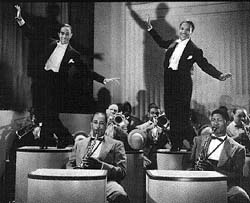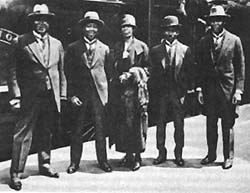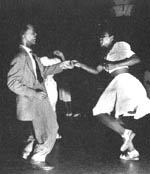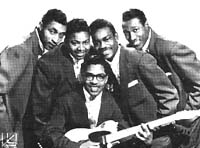
BLACK MUSIC ON MERSEYSIDE - AN OVERVIEW.
Without doubt the theme of "Black Music and Liverpool" does present us with a major problem in that it is almost impossible to document a clear and concise history due to the fact of insufficient data and research. As with all histories that are told from "below", and have also been hidden away, vast amounts of work and time have to be undertaken so that those histories can be brought back to life.
As an example, even the work done by Paul Oliver on Black Music in Britain, (OU Press) has only really scratched the surface. All things considered it is still a marvellous piece of work, especially the way in that the various contributors have managed to track the major lineage of Black music over the centuries within the UK.
Liverpool would have to be classed as one of the main conduits of Black music over the centuries due to its links with Africa, the Caribbean and the USA. Although it would have to form part of a major study, it would be of interest whether the same rhetorical practices, i.e. slave song and spirituals, which formed an integral part of resistance to slavery, were used in Liverpool during the slave-trade era, and in what form they were inter-woven into more general music processes.
We do know that Pell's
Ethiopian Serenaders appeared in Liverpool in 1848 accompanied by William
Henry Lane, nicknamed Master Juba, who due to his all round routines can
only be described as the first "song and dance man". Elements of his "Tennessee Double-shuffle" fed into dance as the Nicholas
Brothers demonstrate left. Hague's Georgia Minstrels toured the UK from
1866 and played the Theatre Royal, Williamson Square, in July of that
year. They were predominantly a troupe made up of ex-slaves. Hague ended
up bringing over more additions to his troupe from the USA. Working in
conjunction with the troupe was a singer called Aaron Banks, who always
climaxed his spot with a song called "Emancipation Day ". One part of
the troupe ended up settling in Liverpool in the late 1870s.
Elements of his "Tennessee Double-shuffle" fed into dance as the Nicholas
Brothers demonstrate left. Hague's Georgia Minstrels toured the UK from
1866 and played the Theatre Royal, Williamson Square, in July of that
year. They were predominantly a troupe made up of ex-slaves. Hague ended
up bringing over more additions to his troupe from the USA. Working in
conjunction with the troupe was a singer called Aaron Banks, who always
climaxed his spot with a song called "Emancipation Day ". One part of
the troupe ended up settling in Liverpool in the late 1870s.
Elizabeth Taylor Greenfield,
later dubbed the "Black Swan"/ "African Nightingale", an ex-slave from
Natchez, Mississippi, arrived at the Liverpool
Docks in April 1853. After taking the country by storm and after establishing
herself as one of the major musical artists of the day, she returned to
the States in 1854 (presumably out of Liverpool?). Entering the stage
twenty years later were the Fisk Jubilee Singers (below), who toured the
UK on numerous occasions, with the same rapturous response as those black
artists who preceded them.
The response and the acclaim that accompanied those black musicians, as previously mentioned, was continued into the Edwardian era as the influence of Afro-American forms of music that came to be known as "Jazz" began filtering into the UK. Visiting musicians now started to play a major role in the development of popular music. Residencies in clubs from 1910 onwards became a common feature of life for Afro-American musicians. Someone, somewhere must also know what the clubs in Liverpool, legal and otherwise, were playing and what people were listening and dancing to. As elsewhere around the world the development of Jazz coincided with the demand for "dance-music", as women wanted not just freedom in their political lives, but freedom to enjoy themselves in the socio-cultural realm as well. One person definitely influenced by the arrival of Jazz was a lad called Gordon Stretton, born to Afro/Irish parentage in Liverpool in 1887.He first toured with a clog dancing troupe and then took up with a Jamaican choir, then sang with various Jazz bands before becoming the toast of Paris cafe-society with his Orchestra Syncopated Six in 1923. He spent the rest of his life in Argentina.
 As
mentioned earlier with more and more bands gaining residencies in club-land
the first muting of discontent were raised by the Musicians Union about
"Negro bands" putting British musicians out of work. The end result of
this continued agitation was that the Department Of Employment conceded
to the demands of the Musicians Union and from 1935 till 1956 no American
musicians were allowed to play in the UK. When you understand who was
affected by this ban, not just some of the "greats" in music but also
the music they themselves were producing, then you can see how within
the UK we ended up with forms of music, heavily Anglo-centric and shorn
of any emotional and soulful content.
As
mentioned earlier with more and more bands gaining residencies in club-land
the first muting of discontent were raised by the Musicians Union about
"Negro bands" putting British musicians out of work. The end result of
this continued agitation was that the Department Of Employment conceded
to the demands of the Musicians Union and from 1935 till 1956 no American
musicians were allowed to play in the UK. When you understand who was
affected by this ban, not just some of the "greats" in music but also
the music they themselves were producing, then you can see how within
the UK we ended up with forms of music, heavily Anglo-centric and shorn
of any emotional and soulful content.
 Fortunately
the British public did manage to see and hear the effusive Duke Ellington
and his band when they toured in 1933. Particular newspapers of the time
thundered with rage about music deemed to be "impure and polluting", as
Ellington with his form of piano playing nicknamed the "Harlem Stride",
due to it breaking the straight-jacket of classical European precedents,
brought the rhythmic sounds of Harlem boogieing into every major city
in the UK. In Liverpool, he ended up playing seven curtain calls and encore
after encore. 1935 ARRIVED AND THEN THE MUSICIANS BAN KICKED IN
Fortunately
the British public did manage to see and hear the effusive Duke Ellington
and his band when they toured in 1933. Particular newspapers of the time
thundered with rage about music deemed to be "impure and polluting", as
Ellington with his form of piano playing nicknamed the "Harlem Stride",
due to it breaking the straight-jacket of classical European precedents,
brought the rhythmic sounds of Harlem boogieing into every major city
in the UK. In Liverpool, he ended up playing seven curtain calls and encore
after encore. 1935 ARRIVED AND THEN THE MUSICIANS BAN KICKED IN
BLACK MUSIC LOCALLY
People will have
noticed that the overview dealt predominantly with the black influences
coming to the city from America from the nineteenth century onwards. Again
there needs to be a major study around the music that was already contained
within the city itself. The Church, as in any narrative concerning Black
music would have been a seminal influence. The African Churches Mission
in Hardy St, founded by Pastor George Daniels Ekarte in 1922, was where
African consciousness would be constantly re-affirmed. The great African
tradition of religious and secular worship being a celebration of the
mind and body as one, and by doing this, seeking higher levels of spiritual
understanding. All of this, together with the interlocking rhythms, the
calls-and-responses, helped create a sense of spiritual community. Included
within this would have been the incarnation of West African styles of
singing. The highest and purest form being falsetto. (Gospel falsetto
was one of the roots of Doo-Wop, and influenced the music of Smokey Robinson
and the Miracles, the Temptations, Curtis Mayfield, and the Chants) There was a huge diversity to the music due to the varying black influences
that were established in the city. In the main, the variety reflected
the musical traditions of the African coast plus Jamaican mento and calypso.
Access to some of these remarkable musical traditions was gained through
the network of communal clubs that sprang up in the areas where Liverpool's
Black population had settled.
There was a huge diversity to the music due to the varying black influences
that were established in the city. In the main, the variety reflected
the musical traditions of the African coast plus Jamaican mento and calypso.
Access to some of these remarkable musical traditions was gained through
the network of communal clubs that sprang up in the areas where Liverpool's
Black population had settled.
These clubs were set up on a self-help basis and created "spaces" for Black recreation away from the iniquitous colour bar that was endemic in the club-land of Liverpool. Whether it be the Nigerian, the Sierra Leone, the All Nations, to name but three, you were guaranteed nights of rich and fascinating entertainment. Until they came under pre-meditated attack from the forces of law and order and one by one they were forced to close. Gone forever and a huge loss to the musical tradition of the city.
 If
we return to the effects of the Musicians Union ban, and try and map out
the transmission of some of the prodigious music that was being produced
by Afro-Americans in that twenty year period from 1935 - till the partial
lifting in 1956, Black service-men stationed at the segregated Burtonwood
Air base would be central as transmitters of music into Liverpool.
If
we return to the effects of the Musicians Union ban, and try and map out
the transmission of some of the prodigious music that was being produced
by Afro-Americans in that twenty year period from 1935 - till the partial
lifting in 1956, Black service-men stationed at the segregated Burtonwood
Air base would be central as transmitters of music into Liverpool.  They
would visit the city and seek out the "Black spaces" whereby a night out
could be enjoyed free from racist bile. Of course it did not always turn
out like that, as there was always the tension and possibility of attack
from racist elements active in the city, and what was guaranteed was the
innocent would be charged with "causing an affray" - same as it ever was.
They
would visit the city and seek out the "Black spaces" whereby a night out
could be enjoyed free from racist bile. Of course it did not always turn
out like that, as there was always the tension and possibility of attack
from racist elements active in the city, and what was guaranteed was the
innocent would be charged with "causing an affray" - same as it ever was.
With the licensing laws of this country still tied into a 10 or 10-30 finish, people's own houses became integral to all aspects of "partying". The focus was on records that these Black GIs had with them and also the "ole piano" would be rolled out. As described earlier the "Harlem Stride" that Duke Ellington had developed, would then be brought into people's parlours as the Black service men would "play it as it was". The Harlem Stride, developed from RagTime, was based on a constant left handed rhythmic leap, which created an inflexion of all round harmonic accompaniment. Also there would be the soft and swinging tones of Black acapella, Doo-Wop, that later on, the young kids hanging around the tenement blocks would mimic all night long and claim as their own.
It was in the very early 1950s that the potential for the huge cultural crossover that Black music created was beginning to come to the fore. This was the time when young, white, Liverpool seamen who worked the Cunard Line, were sailing to New York. Although they did not know it at the time, they were colliding with the outpouring of a music scene that was occurring in the USA based on the great migration of Afro -Americans to the northern states and the cities of Chicago, Detroit and New York.
 They
were sailing out of a country that was war-torn and ration-ridden; a country
that was grey and drab that was reflected in the clothes, music and the
cultural habits of its people. A small group of cooks, pantry-men and
waiters were later to be nick-named "The
Cunard Yanks". Many of them can still describe sailing up the Hudson
River, and listening to a dozen or more radio stations sending out a cacophony
of rhythmic sound from acappella, to swinging blues with a rocking chorus,
the early R'n'B, through to cool Jazz. By championing these musics, these
seamen found themselves by-passing the ingrained working class racism
of the time. Their musical tastes that they brought back to the city marked
them out. Not for them the pale-faced bandleaders and anodyne radio orchestras
that dominated the British airwaves. Instead they sang the praises of
long forgotten Black artists who were major influences on the development
of today's popular music.
They
were sailing out of a country that was war-torn and ration-ridden; a country
that was grey and drab that was reflected in the clothes, music and the
cultural habits of its people. A small group of cooks, pantry-men and
waiters were later to be nick-named "The
Cunard Yanks". Many of them can still describe sailing up the Hudson
River, and listening to a dozen or more radio stations sending out a cacophony
of rhythmic sound from acappella, to swinging blues with a rocking chorus,
the early R'n'B, through to cool Jazz. By championing these musics, these
seamen found themselves by-passing the ingrained working class racism
of the time. Their musical tastes that they brought back to the city marked
them out. Not for them the pale-faced bandleaders and anodyne radio orchestras
that dominated the British airwaves. Instead they sang the praises of
long forgotten Black artists who were major influences on the development
of today's popular music.
Earl Bostic, the
inheritors of the Mills Bros.' and Inkspots' acappella tradition, a tenor
backed by a bass and a couple of altos, Doo-Wop, the Crows, the Moonglows,
the Orioles and the Flamingos, plus Joe Turner, Ray Charles, and Ivory
Joe Hunter. This was the music they collided with. In a more mellow mood, they would
seek out Al Hibbler, Roy Hamilton, and Brook Benton. Their dress sense
reflected their tastes in music. Whilst in Britain, Army and Navy de-mob
suits and army coats were the norm, for them the effusive and elegant
Billy Eckstine was the role model. So it was midnight blue tonic mohair
suits, slip-on shoes, button down or tab-collar shirts. A mode of dress
that pre-dated "MOD" by six or seven years. Local music aficionados have
constantly sought to dismiss and demean the influence of these young seamen.
It would have helped if they spoke to them or even checked out the record
collections that some still own. But then that would have conflicted with
their own very narrow terms of musical reference, i.e., that the only
forms of music important to Liverpool in terms of influence would be white-rock
and rollers, Presley, Perkins and Holly. The point that all of them have
missed and is proof of their myopic view of music, is that the Hibblers,
the Eckstines, the Moonglows (below)
This was the music they collided with. In a more mellow mood, they would
seek out Al Hibbler, Roy Hamilton, and Brook Benton. Their dress sense
reflected their tastes in music. Whilst in Britain, Army and Navy de-mob
suits and army coats were the norm, for them the effusive and elegant
Billy Eckstine was the role model. So it was midnight blue tonic mohair
suits, slip-on shoes, button down or tab-collar shirts. A mode of dress
that pre-dated "MOD" by six or seven years. Local music aficionados have
constantly sought to dismiss and demean the influence of these young seamen.
It would have helped if they spoke to them or even checked out the record
collections that some still own. But then that would have conflicted with
their own very narrow terms of musical reference, i.e., that the only
forms of music important to Liverpool in terms of influence would be white-rock
and rollers, Presley, Perkins and Holly. The point that all of them have
missed and is proof of their myopic view of music, is that the Hibblers,
the Eckstines, the Moonglows (below) ,
the Chords and many, many, more, carved out a Black presence in popular
music tastes that was unheard of ten years previous.
,
the Chords and many, many, more, carved out a Black presence in popular
music tastes that was unheard of ten years previous.
Back in Liverpool,
you were literally, "seduced by sound" when you entered the clubs of L1
and L8, as the rhythm swirled around you. Rhythm was the core. Both melody
and harmony became inseparable from the "beat", through intricate improvisation.
The complete anti-thesis to skiffle. Over a long period of time, the African
seamen who made their home in Liverpool had brought with them the vernacular
music that had the drum and the chord as its soul. The guitar style was
called "vamping". In the White House public house off Duke Street, Odie
Taylor, Wally Quarless and George Dixon, are experimenting, improvising
with acappella, falsetto harmony, rhythms of drum and bass. Always hovering
intently in the background were two young men by the name of Lennon and
McCartney. But that is a different story isn't it? 
Find
out what's
happening today at: SOUL IN
THE CITY
Pic below left -(copyright Bill Harry. Printed with permission)
 |
 |
 |

